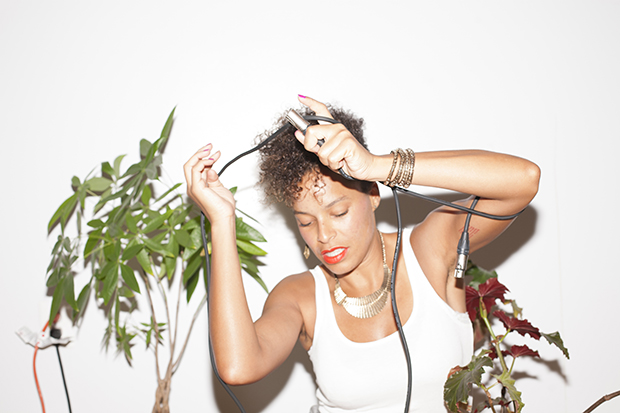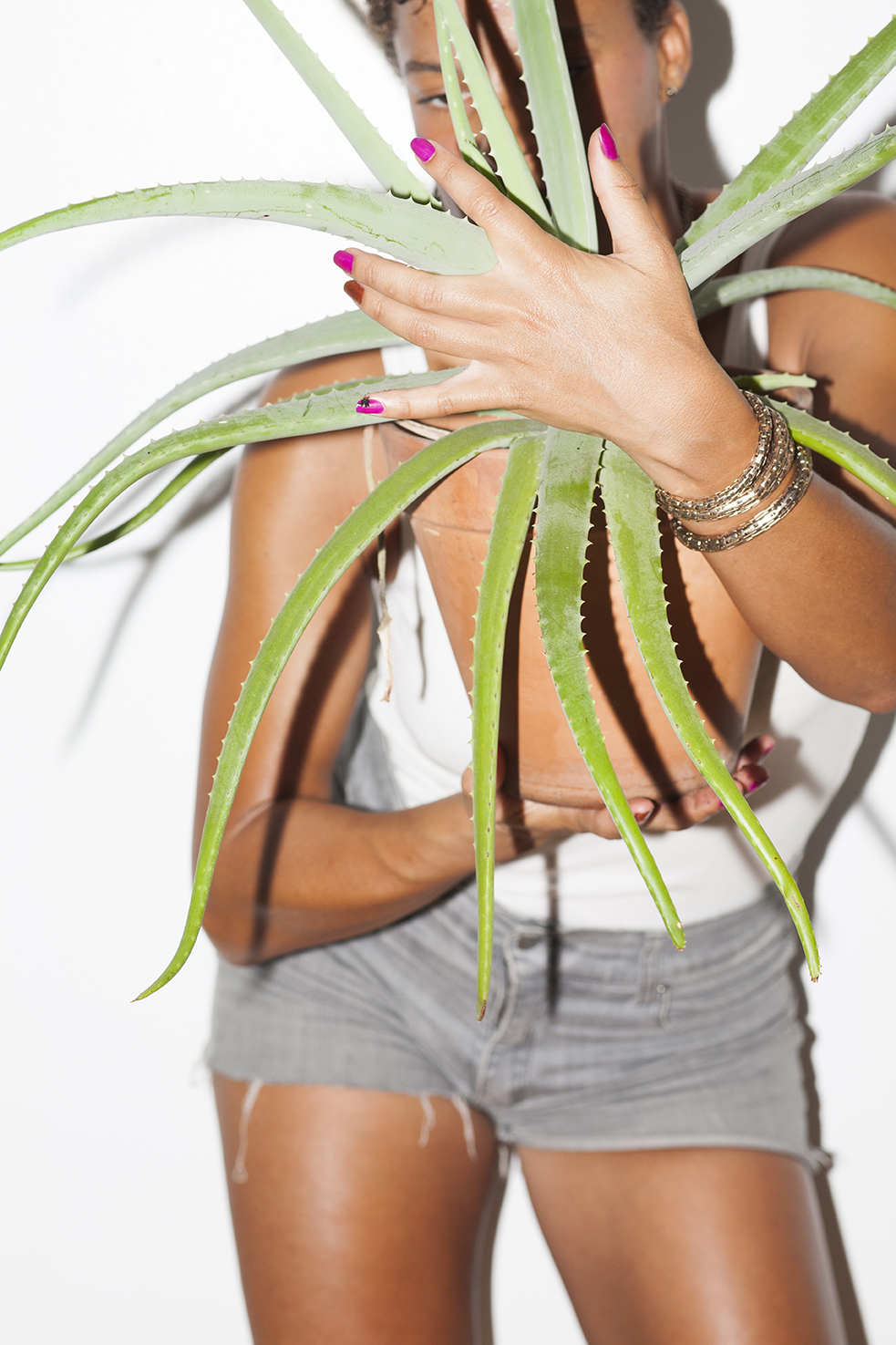
Phaidon's Frieze interviews – Isabel Lewis
The artist explains why her Frieze Project is part modern-day ritual, part ancient Greece drinking party
Performance art can be a little daunting. How should we act when invited to, say, cut off an artist’s clothing or inflict pain on a passive subject with an array of knives and other weapons?
Fortunately, there will be no such unpleasant considerations at Isabel Lewis’ Frieze Project. The Dominican-American artist trained first as a dancer, before going on to develop her work, as an editor, DJ and fine artist. Drawing influences from art perfromances, philosophy and cultural criticism, as well as contemporary art, music, and club culture, she hosts Occasions, a hybrid Fluxus-style happening, latter-day ritual, and arty party. The event, though high-minded, remains convivial and relaxing. Read on to discover how plants give her events an energy, why she thinks dance makes you more culturally aware, and which Berlin nightclub she went to just to take in the smells.
You come from a dance and performance background. Yet these Occasions you host aren’t a conventional gallery event or a dance production. What’s the closest equivalent? A church service? A séance? Or is it just a great excuse for a party? I like that your question addresses format and evokes the social behaviours of collective rituals like partying, worship, and the magic of incantation. The occasion format is similar perhaps to a 17th century French salon but less mannered and more relaxed so perhaps also close to a dinner party or the ancient Greek drinking party, the symposium.
You’ve worked with the olfactory researcher Sissel Tolaas? Why did you choose to work with her? How did the collaboration work out? What does Tolaass add? For a long time I've wanted to work with smells. When I worked in theatres I always wished for a way that the experience of dance could become more sensual. Dance is so bodily and yet in its presentation in the theatre format it becomes a mostly visual experience. In the club or dance studio or in some of the rituals you mentioned earlier the visual sense is addressed but not primarily. Smell and sensations of touch are addressed too in perhaps more salient ways. Sissel and I connected at the Serpentine Gallery's Memory Marathon where we were both giving presentations, her's focused on smell and memory and mine on dance and memory. We started having regular meetings at her lab in Berlin discussing adding the element of smell to the composition of live work and smelling different combinations of molecules. Getting more in touch with the olfactory had a big impact on me. I've begun to consciously forefront this sense in my experience of the everyday. One night I went to Berghain in Berlin with the main objective of smelling. Of course I listened and danced to music too but just putting more focus on this sense intensified the entire experience. Finally Sissel and I composed three smells together that are activated during the occasion. I love Sissel's mischievous spirit paired with her sophistication and I think you can smell this in the occasion.

We’re interested in your ideas as to how dance tuition enables a person to develop a sympathetic body. Could you explain this a little bit, and tell us how it relates to this particular Frieze Project? I think dancing of any kind, not necessarily learned or technically trained, puts you into a different kind of contact with your surroundings. It puts you in touch with yourself in a deep way that goes beyond the rational. While dancing its possible to interact with different information flows; you can put your body for example into the shape of something you see, you can move to the pulse of music, or from a physical sensation, or from your imagination, or in response to a dance partner's cues. You can try out different kinds of social dances for example which will put you in contact with different sets of cultural values. There is so much information held within our set of cultural choreographies, our habits that we are all reading and responding to all the time. Dance can sensitize and make one more aware of these performed and witnessed choreographies. I think practicing dancing and moving, and I don't mean in a technical way, makes the body more open, more receptive.
Why are plants an important part of your Occasions? What sort of plants do you include and why? They are beautiful and give off a very palpable energy. I notice when I am installing that as soon as the plants arrive at the space not only do I have more energy and a greater sense of well-being but that people come into the space and smile, and they stick around for a bit. I tend to use plants that are hardy, with lush leaves, and often tropical. I enjoy evoking warmer climates in the occasion.
These Occasions last as long as the energy of the crowd lasts, from two to four hours. If this Frieze Occasion lasts only a short amount of time, have the attendees failed in some way? The duration per se is not important to the work but appropriateness and/or "situatedness" is very important to the work. I don't have particular expectations about how long visitors will linger inside the occasion so failure in the sense you suggest is just not possible. The occasion format lives between the exhibition and the theare format and one important thing it retains from the exhibition is the liberalism of that format, that people can come and go as they wish during the time the occasion space is open. Maybe its not the best metaphor but perhaps the rules of engagement are more like an open relationship than a strictly monogamous one. There is desire there of course as in any relation, for example I hope you'll stay for a while, I invest quite some energy into caring about you, but I know I don't possess you, maybe momentarily but you are not my property just because you've entered an intimate space with me.
{media2}
Why is it being hosted at Selfridges Hotel and at Fenton House and not Frieze itself To get a more complete answer you would have to ask Nicola Lees about that. I did have a specific idea for the fair but in the end it seemed more appropriate to go for less quantity of attention and more quality attention. Working in these two extremely different spaces, one a gutted hotel now a sprawling raw concrete space in Central London and the other a withdrawing chamber or sitting room in a 17th century merchant's home in Hampstead gives the occasion format a chance to be stretched and me a chance to play and respond to the architecture and accompanying visual and social histories of these spaces.
The Frieze Art Fair takes place 15 – 18 October in Regents Park, London. For more on brilliant contemporary artists such as Isabel Lewis buy a copy of The 21st Century Art Book. Look out for our interviews with more Frieze artists, curators, designers and collaborators over the coming days.